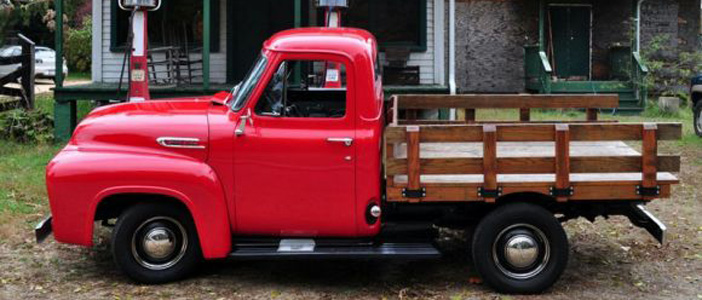BRAKING NEWS Master Cylinder Sizing & Guidelines
While there is no perfect calculation for the perfect pedal feel when it comes to the master cylinder bore size, there are some guidelines you should follow.
In this brake tech story, we’ll take you through some of those guidelines and try to help you understand why going to a bigger bore isn’t always better when it comes to your brakes.
When you are ready to make your choice for a new master cylinder, you have to take some things into account. The fluid pressure required to move the pistons on your truck, the pedal ratio you’re using, if you are using a booster or not, and if you are going to use a single master or use a master for the front and another for the rear brakes. It can become an issue of trial and error in the end.
 The biggest considerations to keep in mind are the piston area for both caliper pistons and the master cylinder along with your pedal ratio we discussed in the previous article. To get an idea of what the piston area is for your calipers, we have to do some math. Yeah, it’s that dreaded m-word, but hear us out.
The biggest considerations to keep in mind are the piston area for both caliper pistons and the master cylinder along with your pedal ratio we discussed in the previous article. To get an idea of what the piston area is for your calipers, we have to do some math. Yeah, it’s that dreaded m-word, but hear us out.
Piston area is 0.785 * d * d (d= piston diameter). So, a one-inch diameter piston will have roughly a 0.79-square-inch area. If you have multiple pistons on a fixed mount caliper, you add their area as well. Then you add the total of the caliper on the other side.
 For a floating caliper, you take the result and multiply it by two. So, if you have a single piston floating caliper with a 2-inch piston; that has a total piston area of 12.56-square-inches for that axle. A 6-piston fixed caliper with a 1.75-inch, 1.50-inch, and 0.75-inch pistons will be 18.45-square-inches on that axle.
For a floating caliper, you take the result and multiply it by two. So, if you have a single piston floating caliper with a 2-inch piston; that has a total piston area of 12.56-square-inches for that axle. A 6-piston fixed caliper with a 1.75-inch, 1.50-inch, and 0.75-inch pistons will be 18.45-square-inches on that axle.
Now, we need to get the ratio between the master cylinder and the caliper on that axle. Let’s say you have a 1-inch diameter master cylinder, the piston area will be 0.79-square-inches. That comes out to a 23:1 ratio (rounding here) that now must be halved since we can only apply this to half of our caliper since our calipers only use one pad per side.
Now, let’s put 50-lbs of force on the pedal that has a ratio of 7:1 and no boosting. That 50-lbs of force is now 350-lbs of force at the master cylinder. The pressure the master cylinder will send to the calipers will be 443-psi (350/.79=443-psi).
Now, we multiply the pedal ratio to the halved master cylinder to caliper ratio (11.5*7= 80.5:1) and that 50-lbs at the master pedal becomes 4025-lbs at the pad.

If you can do all of that with a half-inch push by your feet and that feels comfortable, then you’re good. However, if you bump up the master cylinder size to 1.125-inches, which will now increase the area to 0.99-square-inches, your MC to caliper ratio to 18.6:1, and your 50-lbs will only be 3255-lbs. Bigger isn’t looking so much better, huh?
Find answers to your questions in the forum.>>
F-150 photo courtesy of forum member Ydnaryllek.

